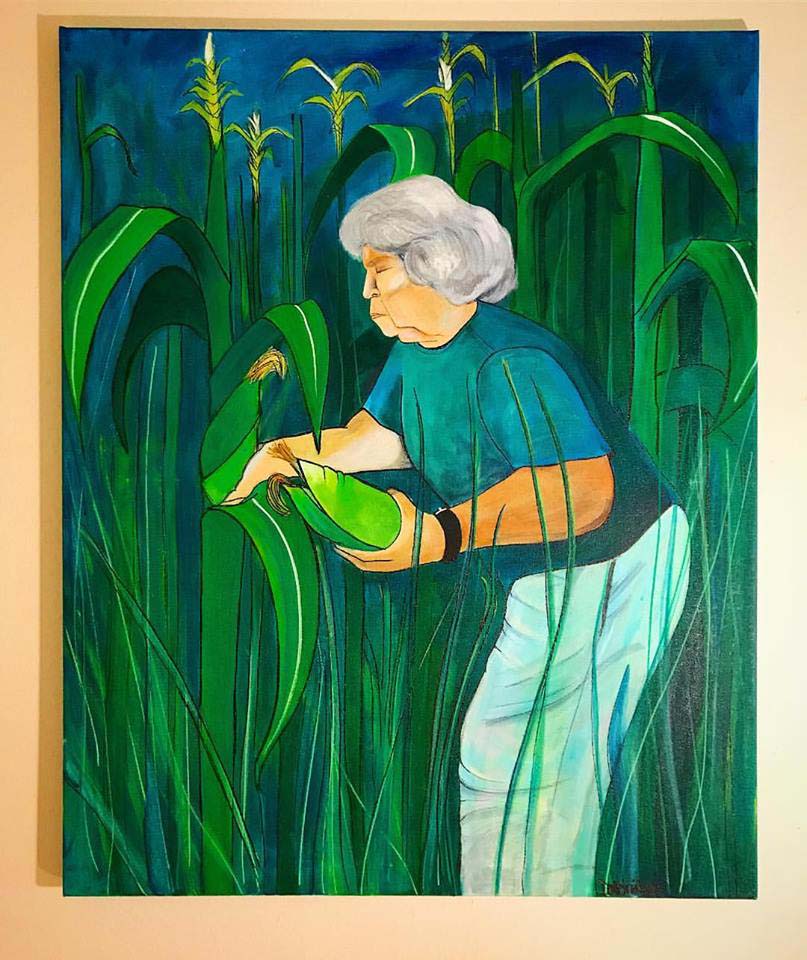Corn

Corn is a grass, native to the Americas. The exact origin is unknown, but tiny ears of corn have been discovered at ancient village sites and in tombs of early Americans. Evidence of corn in central Mexico suggests it was used there as long as 7,000 years ago, where it was domesticated from wild grass. Cultivated corn is known to have existed in what is now the southwestern US for at least 3000 years. In the United States, many of the various Native American tribes have traditionally grown corn—also known as maize—and used it for both food and utilitarian purposes.
Eastern tribes shared their knowledge of corn production with early European settlers, an act which saved many from starvation. The settlers dried corn and ground it as meal for flour. They used the ground corn in porridge, cake and bread. Besides eating the corn and feeding it to their animals, colonists also learned to stuff their mattresses with corn husks and to burn corn cobs for fuel. From the cobs and the husks they learned to make toys.
Fresh, or sweet corn, the kind we like to eat as corn on the cob, was not developed until the 1700s. Before then corn was only used in its dried form.
Along with wheat and rice, corn is one of the world's major grain crops. It is the largest grain crop grown in the US. About 9 percent of all the corn grown is used to produce food for humans. These foods include corn meal and other food products such as cooking oils, margarine, corn syrups and other sweeteners (fructose). Sixty four percent of all corn grown is used as feed for livestock. Corn syrup sweetens candy bars and many of the sweet drinks we enjoy. Corn is even used to make the plastic used in modern toys.
Corncobs have been used in the manufacturing of nylon fibers and as a source for producing degradable plastics. Ethanol, a renewable fuel made from corn, has become a major renewable fuel for the world's automotive industry. Corn starch is a natural polymer made from corn. Corncobs have been used in the manufacturing of nylon fibers and as a source for producing degradable plastics. Nylon and plastic are synthetic polymers.
Corn can be produced in much of Oklahoma, but primary production is in the Panhandle area. In Oklahoma, corn is harvested for either grain or silage, with most of the grain going to dairies, animal feeding operations, and poultry operations. In an average year, around 25 million bushels are grown for grain in Oklahoma, with a yield of 130 bushels per acre. One bushel of corn is equal to 56 pounds.
Corn is pollinated by wind and is typically planted in 30-inch rows. A single seed (or kernel) of corn may produce a plant which yields more than 600 kernels of corn per ear. On one acre of land, anywhere from 22,000 to 35,000 individual plants may be grown. Hybrid corn is developed to produce from one to two ears per plant. Ears per plant is often determined by moisture availability. Through better soil conservation practices, fertilizer use, better seed quality, and water availability, corn yields have increased 125 percent since 1950.
Learning Activities
- Smart Board Activity: Main Idea (Need help?)Please be patient with us as we learn how to use this new technology.
You must have Smart Notebook software installed on your computer to open Smart Board activities. If you have Smart Notebook software and are using Internet Explorer, you may get a message telling you the activity cannot be opened. In this event, save the activity to your hard drive. Your browser will save it as a zip file. Simply change the "zip" in the file name to "notebook," and you should be able to open it.
Thank you for your patience.
Smart Board Acitivity page
- Smart Board Activity: Main Idea (Need help?)Please be patient with us as we learn how to use this new technology.
You must have Smart Notebook software installed on your computer to open Smart Board activities. If you have Smart Notebook software and are using Internet Explorer, you may get a message telling you the activity cannot be opened. In this event, save the activity to your hard drive. Your browser will save it as a zip file. Simply change the "zip" in the file name to "notebook," and you should be able to open it.
Thank you for your patience.
Smart Board Acitivity page
Additional Resources
- More Facts about Corn
- Books about Corn
- Recipes
- Craft: Corn Husk Dragonflies
- Agriculture in Art
- Autumn Cornfield, 1950 by Andrew Wyeth
- Gathering Corn, 1998 (Gilcrease Museum) by Norma Howard
- Green Corn Dance, 1835-37 by George Catlin
- Kansas Corn Field, 1933 (Wichita Art Museum) by John Steuart Curry
- Shimasani (Grandmother), 2017 by Demetria Dale (with permission from the artist)
- Corn Facts, with Debra Deskin, Edmond
 Shimasani (Grandmother), 2017 by Demetria Dale (with permission from the artist)
Shimasani (Grandmother), 2017 by Demetria Dale (with permission from the artist)
